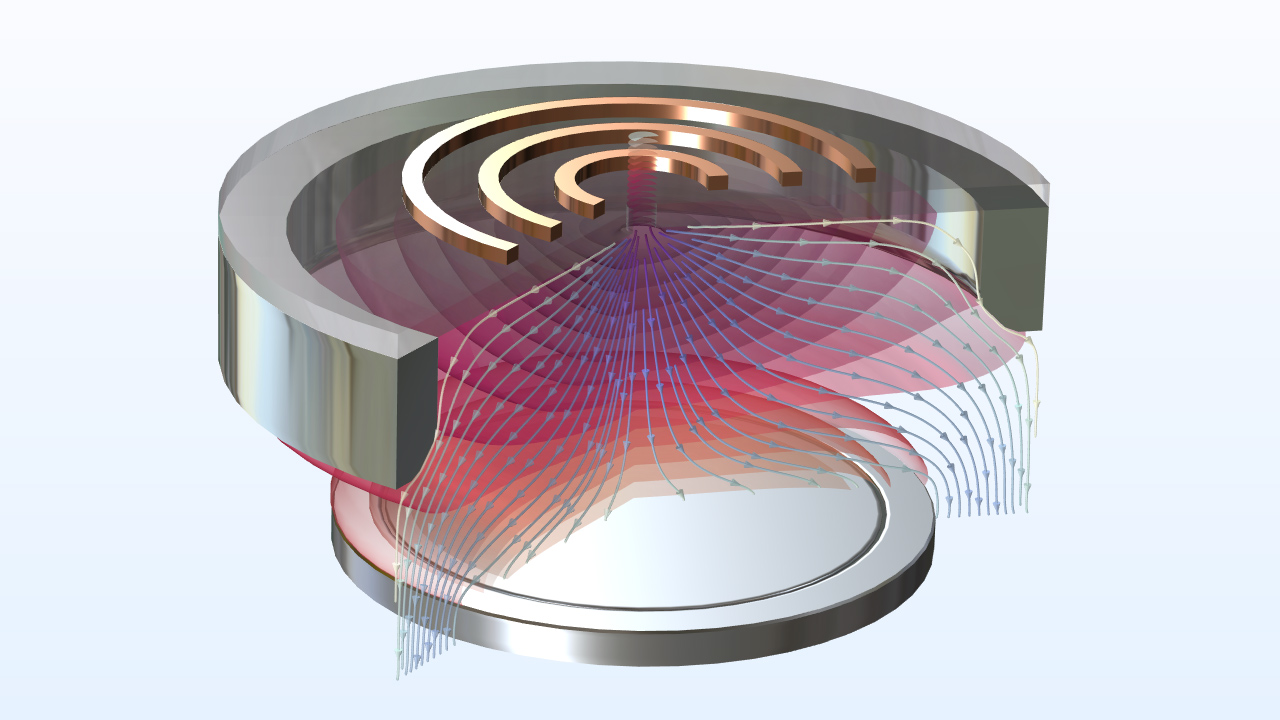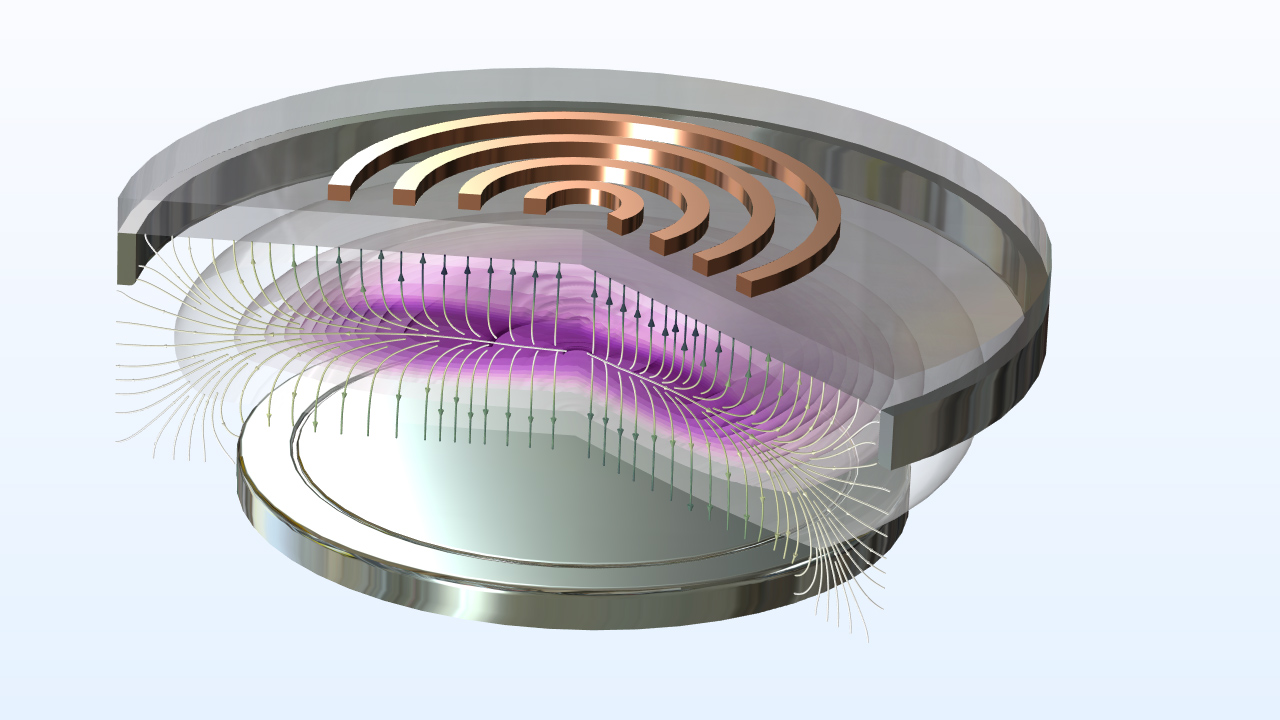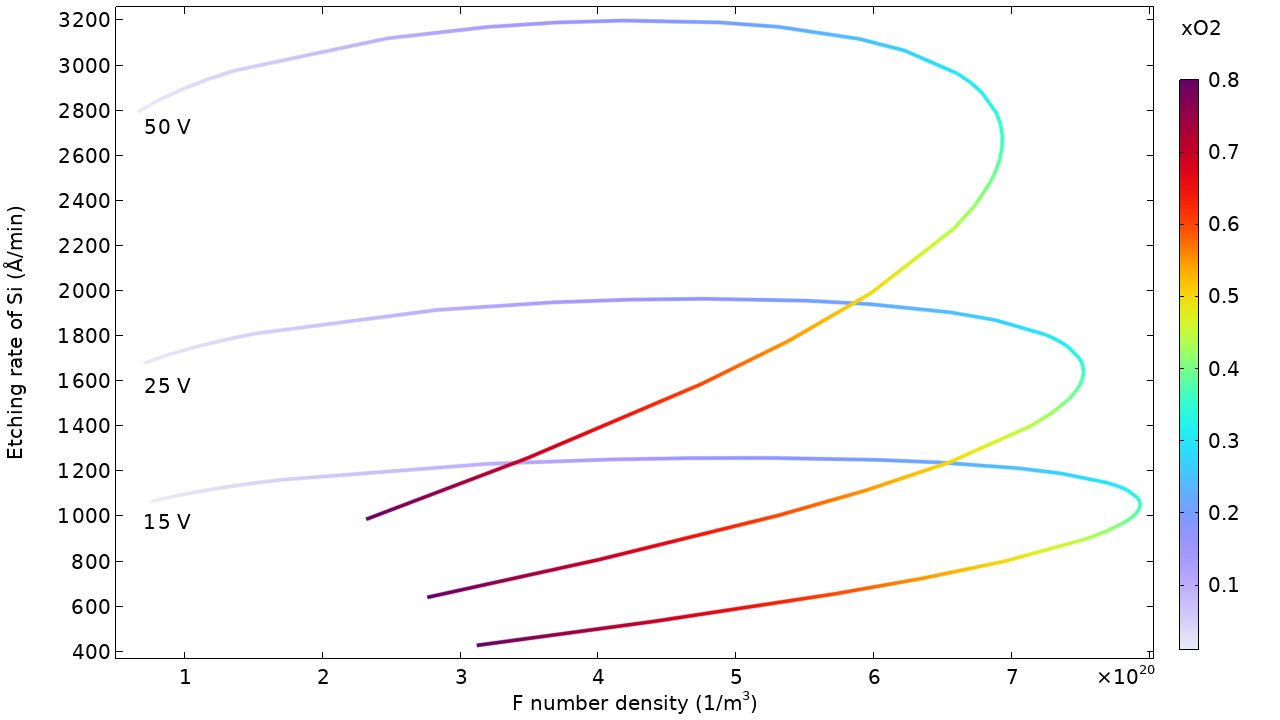Plasma Module Updates
For users of the Plasma Module, COMSOL Multiphysics® version 6.4 introduces improved modeling of etching and deposition, a new feature for managing large sets of surface reactions, and the capability to import a complete plasma chemistry from a text file. Read more about these updates below.
Enhanced Modeling of Etching and Deposition
A range of new functionality has been introduced to enhance the modeling of etching and deposition processes in semiconductor applications. Surface species are now supported within the Stationary solver and the Plasma, Time Periodic interface, enabling faster parameterization. They can also be designated as site-constraint species to efficiently capture self-limiting reaction mechanisms. In addition, surface reactions can now be defined with energy-dependent reaction yields. View this functionality in the new tutorial models Modeling of a Silane–Argon ICP Reactor for Plasma-Enhanced Chemical Vapor Deposition of Amorphous Silicon and Model of a CF4/O2 Inductively Coupled Plasma Reactor with RF Bias for Silicon Etching.

New Surface Reaction Group Feature
To streamline the incorporation of surface reactions into plasma models, a Surface Reaction Group feature is now available that enables the input of large sets of surface reactions into a table. Reaction data can be entered manually, imported from a file, or added automatically using the Plasma Chemistry Import feature. This new feature can also be viewed in the new Modeling of a Silane–Argon ICP Reactor for Plasma-Enhanced Chemical Vapor Deposition of Amorphous Silicon and Model of a CF4/O2 Inductively Coupled Plasma Reactor with RF Bias for Silicon Etching tutorial models.

New Plasma Chemistry Import Feature
The new Plasma Chemistry Import feature can automatically create a complete plasma chemistry from a text file for models using the Plasma and Plasma, Time Periodic interfaces. The text file can specify the aspects of a plasma chemistry, including species properties such as thermodynamic parameters, surface reactions, heavy species reactions, and electron impact reactions from cross sections and rate constants. This feature is especially useful for plasma chemistries involving a large number of species and reactions. The following tutorial models demonstrate this new feature:
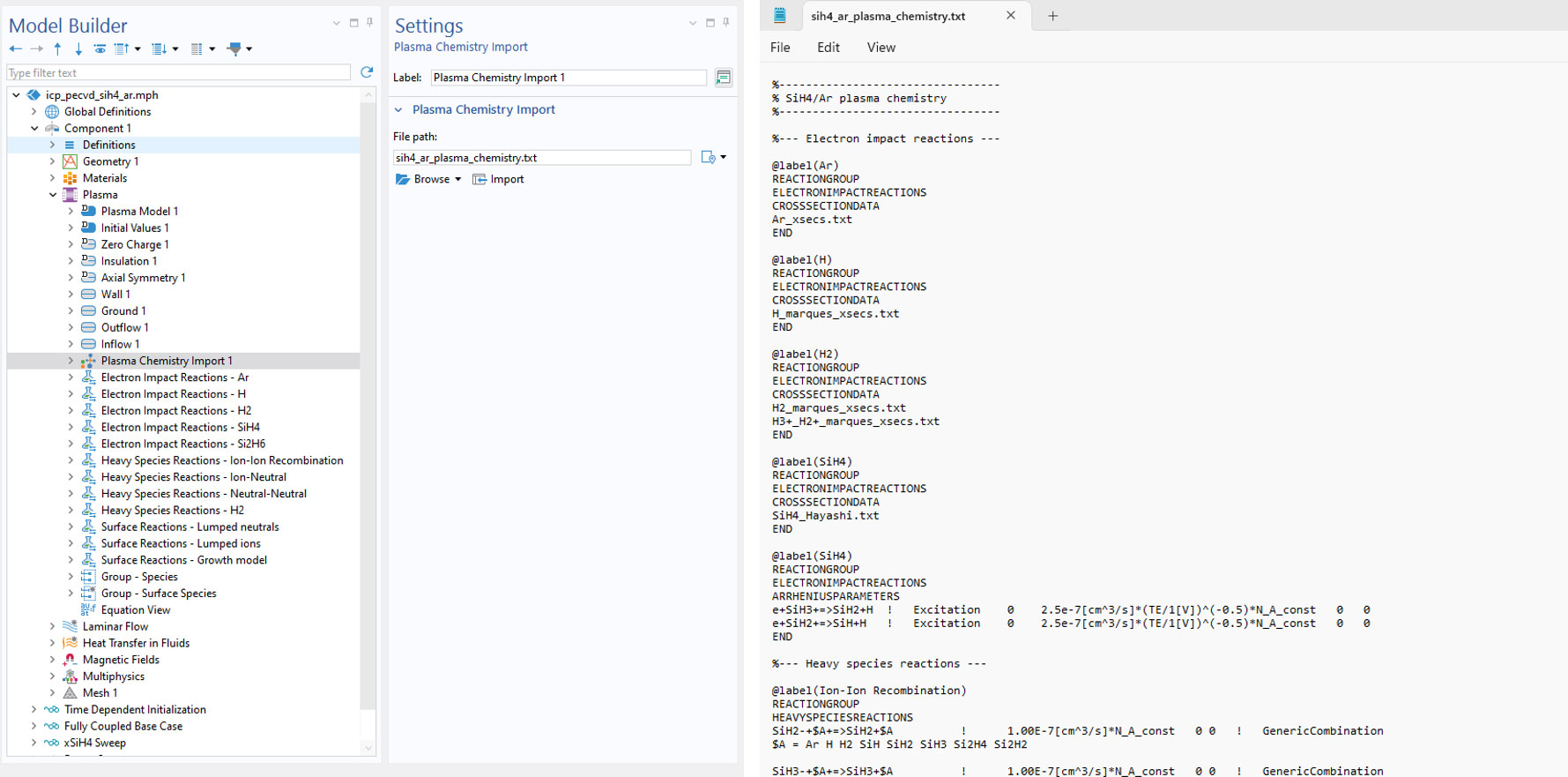
Symmetry for Terminals
The Terminal feature now supports an area multiplication factor (available in the Advanced Settings section after enabling Advanced Physics Options). This accounts for symmetry by scaling the terminal area so connected circuits or loads will perceive the full device even when only part is modeled. For example, a factor of 2 should be used if the model represents half the device. The update is available for the Electrostatics interface, the Electric Currents interface, and the Magnetic and Electric Fields interface.
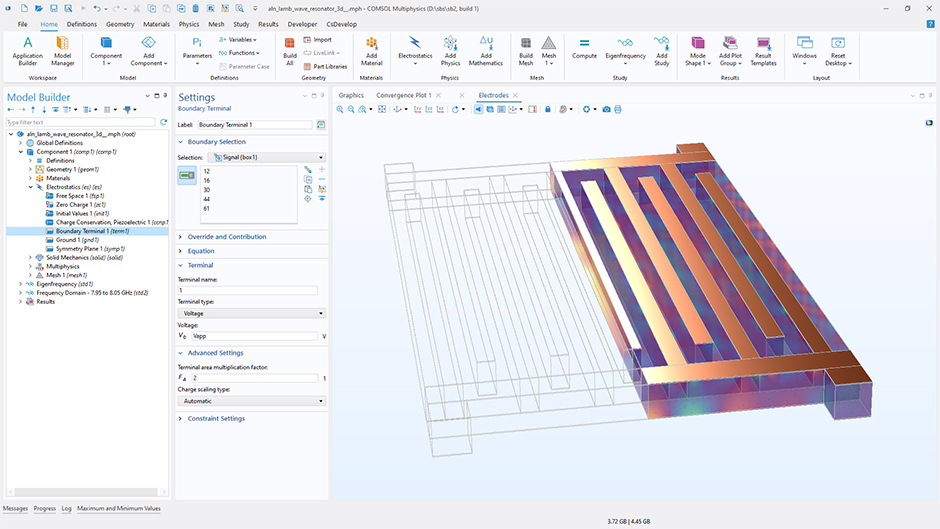
New Tutorial Models
COMSOL Multiphysics® version 6.4 brings several new tutorial models to the Plasma Module.

